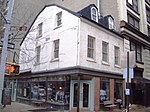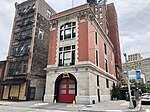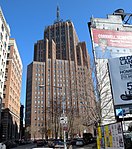Bâtard (restaurant)
2014 establishments in New York CityMichelin Guide starred restaurants in the United StatesRestaurants established in 2014Restaurants in ManhattanUnited States restaurant stubs
Bâtard is a French restaurant in New York City. The restaurant opened in 2014, replacing French restaurant Corton.
Excerpt from the Wikipedia article Bâtard (restaurant) (License: CC BY-SA 3.0, Authors).Bâtard (restaurant)
West Broadway, New York Manhattan
Geographical coordinates (GPS) Address Nearby Places Show on map
Geographical coordinates (GPS)
| Latitude | Longitude |
|---|---|
| N 40.719583333333 ° | E -74.005833333333 ° |
Address
West Broadway 239
10013 New York, Manhattan
New York, United States
Open on Google Maps




